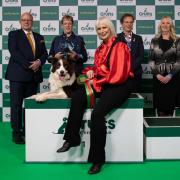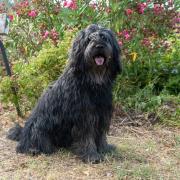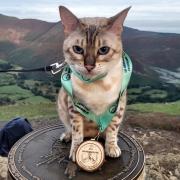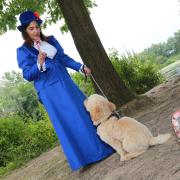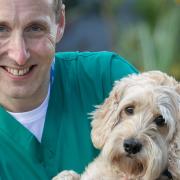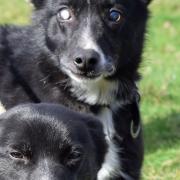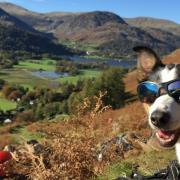One of the world’s leading taxidermists creates his award-winning models in a former slaughterhouse in Orrell

Jack Fishwick is one of the best taxidermists in the world and he has the awards to prove it. He has almost 50 years of experience and a talent that has taken him around the world. His work is in museums and galleries and has been used by generations of people studying wildlife.
But the 65-year-old from Orrell isn't resting on his laurels. 'It's only when you see something better that you realise how good things can be,' he said. 'I always look for the faults in my work so I can make it better next time.
'In 2001 I entered the World Taxidermy Championships in the USA and was named third in the world. I was given three of the highest scores in the whole competition and I realised then I was still hopeless and had a lot to learn.'
He has been learning constantly since he started in taxidermy as a teenager at Leicester University in 1972. After his A-levels, his twin loves of art and wildlife led him to write to every museum in Britain with a taxidermy or natural history department asking for an opportunity. He had two replies, but only one of them was positive.

'I had always been interested in wildlife - I was a keen bird watcher and went fishing and wanted to paint them. As a child I saw taxidermy at a museum in York and my parents said I was transfixed.
'When I was a trainee taxidermist in Leicester I did the basic jobs for a year - skinning and cleaning the birds and small mammals. It was repetitive and I thought it was the best form of learning. The dead birds we were making are valuable for everyone who studies them - they can detect evolution, migration patterns, all sorts of things.
'To be a taxidermist - a good one at any rate - you have to know so much about wildlife. Bird field guides always show images from the side and not from other perspectives. I worked in museums for many years and I was always trying to make it work when viewed from every angle.
'When I teach people now I don't want to teach their brain, but their hands. It's like playing a musical instrument - only when your hands know what to do can you start to play music. Concert pianists practice the scales every morning, they are continually teaching their hands. It's the same with what I do.'

He has always specialised in birds and fish and he was among the prize winners at a Guild of Taxidermists competition in Lancaster in the late 1980s where his work was admired by a taxidermist from Denmark who invited him to show his work overseas for the first time.
'I met people there who made me realise I could do things better,' he said. 'From there I was invited to give seminars and to judge at shows all over the world. I have travelled all over, collecting specimens and meeting people and I am always learning. I want to see the world from other peoples perspectives and to share information.'
After Leicester he worked at universities in Bradford and Edinburgh and was the first person to stage an exhibition at the new Sir David Attenborough Centre at the University of Cambridge.
'It is thought of as a strange profession but I now think of it as art - a totally realistic 3D sculpture to be looked at and admired.'

The birds he stuffs are road and window casualties sent to him by a network of birdwatchers and once they arrive at his workshop in a converted butcher's slaughter house he can transform them into a model of their former self within a couple of days. He's taking a little long over over his latest project, though - it's his entry for next year's UK Guild of Taxidermists competition. He's never left there without awards and he's hoping the two fish now in the workshop will help him maintain that record.
'If you ask someone if they know what a blackbird is like they'll say they do, but they don't, not really,' he said. 'Do they really know its shape, its movement, its habits? That's what I try to recreate in a static 3D object. Even if it's something I've done lots of times, before I start I read all about the animal and study its measurements and look at photographs and videos of it - I go back to the basic sources so that I don't make arrogant errors by assuming I know things.
'I skin the animal by making an incision down the belly and remove the body in one piece - there's no blood, guts and gore, it's a very clean process. The skin is washed and tanned. I make an artificial body from balsa wood and put wire in the legs, wings and neck and slowly rebuild the bird.' The finished model is posed in a suitable setting - again, made by Jack: branches are made from brass tubing, flowers have paper petals and toothbrush bristles for the stamen. He is enjoying working on projects of his choosing - on the day he spoke to Lancashire Life Jack turned down an approach from a famous British artist who wanted him to stuff a bird as part of a new artwork. But Jack is also concerned at the dearth of young taxidermy talent in the UK
'For years I have been looking at who is coming along behind me, who will do this work when I'm not here and I can't see anyone,' he said. 'It seems that the younger generation think if you've got some pictures off the internet you know what something looks like. If you pass an exam it doesn't make you a great surgeon - you need practice and experience and you need to want to keep learning and developing and improving.
'Since funding for museums was cut I don't think any museums employ taxidermists and unless some people really knuckle down and learn, the skill base will be lost in this country.
'I have had a brilliant career and have been around the world - I've never got rich and I never will, but I would do the same again if I had my time again. I'd just be more focused early on and try even harder. I find I have no time for people who are willing to accept something is just good enough. If you can see something is wrong the time to correct is now, not next time.'
To see more of Jack's work, go online to www.tringa.co




